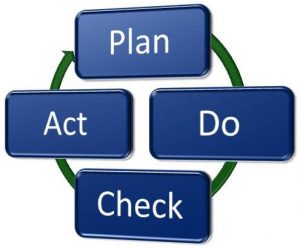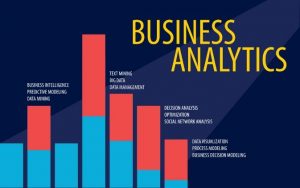Use decision cycle for precision
Decision making is the process to select a course of action from a number of alternatives. Like planning, decision making also requires features like forecasting and action plans. For any organization, policy documents help in taking managerial decisions. But these are decisions of routine nature, which we also call operational decisions. Strategic or important decisions are obviously taken after considering different alternatives. In order to be a successful manager one has to necessarily develop decision-making skills.
What is a decision cycle? It is a sequence of steps used by an organization on a repeated basis to reach and implement decisions, not necessarily each decision adds to profits, but organizations must learn from mistakes made by them. For growth and sustainability a business relies on decision cycle. The ‘decision cycle’ as a phrase is used to broadly categorize various methods of making decisions, going upstream to the need, downstream to the outcomes, and cycling around to connect the outcomes to the needs.
Understanding that organizations go through a specific decision-making process allows business firms and manufacturing-related goods and services to develop programs designed to influence each stage of the business process. If a marketer knows, for example, that a customer is about to establish purchasing specifications, he or she can provide useful technical information or offer advice on industry standards and control factors that may affect the formulation of those specifications. A decision cycle is said to occur when an explicitly specified decision model is used to guide a decision and then the outcomes of that decision are assessed against the need for the decision. This cycle includes specification of desired results (the decision need), tracking of outcomes and assessment of outcomes against the desired results. Success in the battle of doing business is about making decisions more quickly than competing firms can.
All businesses operate around certain business process cycles. A business cycle refers to various trends that occur within an industry/sector, such as growth or withering. Many times, management decisions are impacted by where the company stands in reference to a particular cycle. Macro economy also play an important role in management decisions. When the economy is in a cycle of withdrawal, management of firm will act conservatively, whereas in a cycle of expansion, management may tend to act more aggressively to gain as much market share as possible.
Characteristic of Business Cycle:
Usually any business faces four distinct trends: slowdown, bottom, growth and peak. All businesses, even the most aggressive sales organization experience these cycles. A slowdown occurs after a market has experienced a normal period of expansion. This is often followed by a period of sales maturity and product integration by the existing customer base, which is viewed as a slowdown. During a slowdown, competition enters the market that also creates weaker sales. Finally the business hits a bottom. After this bottom and rough period business gets aggressive and makes steps of expansion and marketing efforts to aggressively go after new market share. Following this period of expansion, business will again begin to see a peak in their performance and start the cycle all over.
Macro Business Cycle Considerations:
Macro cycles include the trend of the overall economy. During periods of sustained economic growth, businesses should seek to gain market share by increasing advertising and market efforts. Also, during periods of economic contraction, business managers may decide to consolidate their operations and position themselves for slow, or negative, growth by maintaining higher cash balances and cutting non-essential costs.
Examples of some decision cycles:
OODA Loop: Originally this decision making tool was coined in the 1950s by Air Force colonel and military strategist John Boyd as a way to illustrate the action and decision cycle that a fighter pilot goes through during an aerial dogfight, it has since been applied to disciplines as diverse as business, medicine, law and the acquisition process in the military. The quality and speed of those decisions get enhanced by new command-and-control precepts and advances in information, surveillance and reconnaissance tools, sensors and systems. As a result, military forces have been improving on their ability to observe, orient, decide and attack, better known as the OODA loop.
For the military, the OODA loop is called by different term at different times. In a kinetic war, it’s often called find, fix and finish, or the more extended find, fix, track, target, engage and assess. It also means something different in Iraq than it does in Afghanistan.
PDCA (Plan–Do–Check–Act) PDCA was made popular by Dr. W. Edwards Deming, who is considered as the father of modern quality control. The concept of PDCA is based on the scientific method. The scientific method can be better explained as “hypothesis” which can be proved under statistical control as a three-step process of specification, production, and inspection. It can be specified as scientific method of hypothesis, experiment, and evaluation. According to Deming, during his lectures in Japan in the early 1950s, the Japanese participants shortened the steps to the now traditional plan, do, check, and act. A fundamental principle of the scientific method and PDCA is the iteration: once a hypothesis is confirmed (or negated), executing the cycle again will extend the knowledge further. Repeating the PDCA cycle can bring the practitioners closer to their goals, usually a perfect operation and output.
Herbert Simon’s model: Herbert Simon made key contributions to enhance our understanding of the decision-making process. In fact, he pioneered the field of decision support systems. According to Simon and his later work with Newell, decision-making is a process with distinct stages. He suggested for the first time the decision-making model of human beings. His model of decision-making has three stages: Intelligence which deals with the problem identification and the data collection on the problem. Design which deals with the generation of alternative solutions to the problem at hand. Choice which is selecting the ‘best’ solution from amongst the alternative solutions using some criterion. Much later, other scholars expanded his framework to five steps (Intelligence–Design–Choice–Implementation–Learning).
Business Analytics: Business analytics (BA) refers to the skills, technologies, practices for continuously connecting exploration and investigation of past business performance to gain insight and drive business planning. Business analytics focuses on developing new insights and understanding of business performance based on data and statistical methods. In contrast, business intelligence traditionally focuses on using a consistent set of metrics to both measure past performance and guide business planning, which is also based on data and statistical methods. Business analytics makes extensive use of statistical analysis, including explanatory and predictive modelling and fact-based management to drive decision making. It is therefore closely related to management science. Analytics may be used as input for human decisions or may drive fully automated decisions.
Design Thinking: design thinking includes “building up” ideas, with few, or no limits. This helps reduce fear of failure among managers. The phrase “thinking outside the box” has been coined to describe one goal of the brainstorming phase and is encouraged, since this can aid in the discovery of hidden elements and ambiguities in the situation and discovering potentially faulty assumptions. In design thinking observation takes center stage. Observation can discern what people really do as opposed to what you are told that they do. Getting out of the comfort zone and involving oneself in the process, product, shopping experience is fundamental.
Design thinking in problem definition also requires cross functional insight into each problem by varied perspectives as well as constant and relentless questioning why? Until finally the simple answers are behind you and the true issues are revealed. Finally, defining the problem via design thinking requires the suspension of judgment in defining the problem statement because what we say can be very different to what we mean.
Decision cycle is evolving in different forms and different perceptions in the business world.
















































